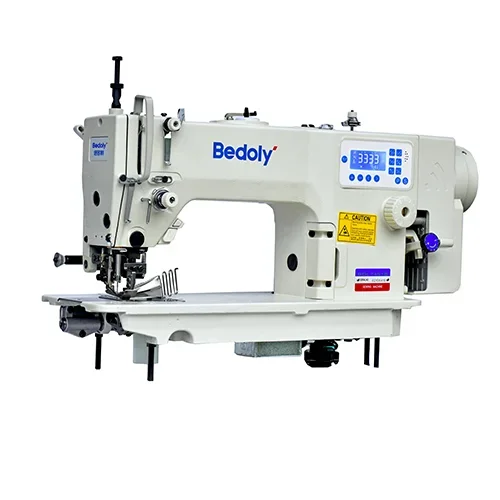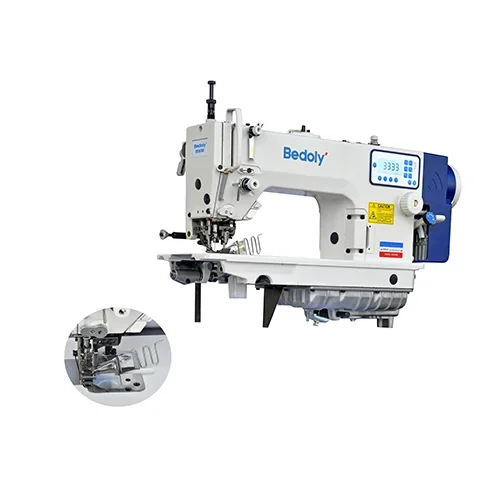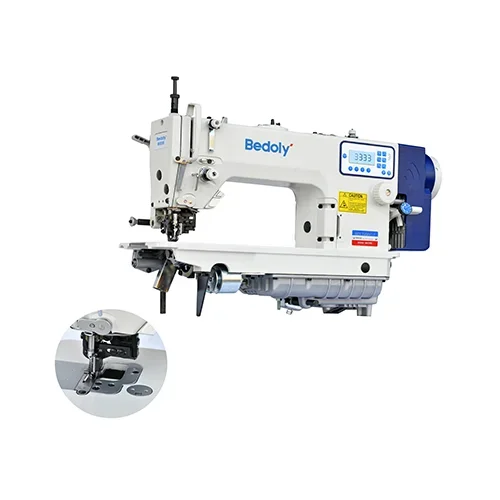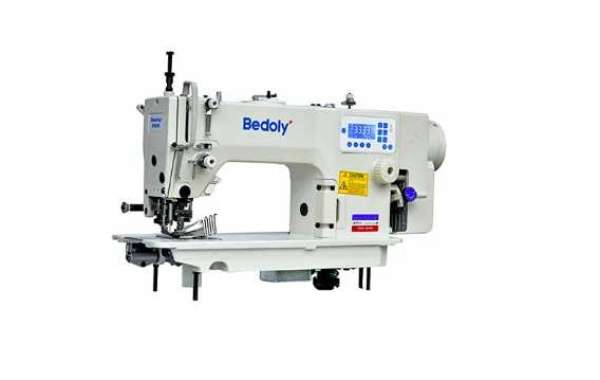Are you tired of constantly using scissors to trim excess fabric from your sewing projects? It’s time to upgrade to a side cutter sewing machine! This handy tool not only saves time but also ensures clean and professional-looking edges on your finished pieces. With so many options available, it can be overwhelming trying to choose the right one for your needs. But don't worry, we’ve got you covered! In this blog post, we’ll walk you through the different types of side cutter sewing machines and what features to consider when making your selection. Plus, we’ll provide pros and cons for each type so that you can make an informed decision. Let's get started!
What is a side cutter sewing machine?
A side cutter sewing machine is a type of sewing machine that has a built-in blade on the side. This blade trims excess fabric as you sew, creating finished edges with precision and speed. Unlike traditional scissors or rotary cutters, which can be time-consuming and imprecise when trimming edges, a side cutter sewing machine streamlines the process for faster and more accurate results.
These machines come in various types and styles to suit different needs. Some models are designed specifically for use with knitwear or stretch fabrics while others work well with heavier materials like denim or leather. Some have multiple blades for different cutting angles while others have adjustable settings depending on the thickness of your material.One thing to keep in mind is that although these machines are useful tools, they do require some practice to master. It's important to read the instructions carefully before using them for optimal safety precautions.Investing in a quality side cutter sewing machine can save you time and effort when it comes to finishing your projects professionally.

The different types of side cutter sewing machines
When it comes to side cutter sewing machines, there are different types available in the market. One type is the overlocker machine or serger that has a built-in side cutter for trimming fabric edges while sewing seams and hems. Another type is the dedicated side cutter machine that only cuts fabric without sewing.There are also hybrid machines that combine both functions, allowing you to sew and cut simultaneously or separately as needed. These can have two separate needles and feed dogs for more versatility in stitch options.Some side cutter machines come with adjustable cutting widths, blade heights, and tension settings to give you more precision control over your cuts. Other models may have limited adjustment options but offer faster cutting speeds for high-volume production.Ultimately, choosing the right type of side cutter sewing machine depends on your specific needs as a sewer or crafter. Consider factors such as budget, skill level, project requirements, and personal preferences when making your decision.
Features to consider when choosing a side cutter sewing machine
When it comes to choosing a side cutter sewing machine, there are several features that you should consider. The first thing to keep in mind is the type of fabric that you will be working with. Some machines are better suited for lighter fabrics like cotton while others can handle heavier materials like denim.Another important feature is the cutting width. This determines how wide the cut will be and can range from 3mm to 9mm depending on the machine. If you plan on using your side cutter for various projects, it’s best to choose a model with an adjustable cutting width.The motor power also plays a crucial role in determining how well your machine performs. A more powerful motor means faster and smoother cuts which can save time and energy in the long run.Ease of use is another factor to consider when choosing a side cutter sewing machine. Look for models with user-friendly controls, clear instructions, easy-to-change blades, and simple maintenance procedures.Pay attention to additional features such as automatic threading systems or built-in LED lights that provide better visibility while working on darker fabrics.By keeping these factors in mind when choosing your side cutter sewing machine, you'll be able to find one that meets all your needs and works efficiently without any hassle!

Pros and cons of different side cutter sewing machines
When it comes to side cutter sewing machines, there are a variety of options available on the market. Each type has its own set of pros and cons that should be considered before making a purchase.
One popular type is the mechanical side cutter sewing machine. These machines are more affordable than their electronic counterparts and typically have fewer features. However, they are durable and reliable, making them a great choice for beginners or those in need of a basic machine.Electronic side cutter sewing machines offer more features such as automatic threading, multiple stitch patterns, and computerized controls. While these machines may be pricier, they can save time and effort during the sewing process.Another consideration when choosing a side cutter sewing machine is size. Smaller models are ideal for those with limited space but may not have all the desired features. Larger models offer more versatility but take up more room in your workspace.Consider noise level when selecting your machine. Mechanical models tend to produce less noise compared to electronic ones which can be beneficial if you plan on using your machine frequently throughout the day.
How to use a side cutter sewing machine
Using a side cutter sewing machine may seem daunting at first, but with some practice, it can be a valuable tool in your sewing arsenal. Here's how to get started:Firstly, make sure that you have the correct foot attached to your machine and that it is properly aligned. The side cutter foot should fit snugly against the needle plate.Next, choose your fabric and thread. It's important to use the right needle size for your fabric type so as not to damage either the material or the machine itself.Now it's time to start sewing! Be sure to guide your fabric carefully through the machine, keeping an eye on both sides of the cut being made by the blades. It may help to go slowly at first until you feel comfortable with using this technique.Remember that different fabrics will require different settings on your machine - for example, thicker fabrics will need a slower speed setting than lighter materials.Once you've finished sewing, take care when removing your fabric from the machine as there may be sharp edges created by cutting off excess material during stitching.Using a side cutter sewing machine takes some getting used to but can produce clean and accurate cuts while saving time compared with manual trimming methods.

Conclusion
Choosing the right side cutter sewing machine can seem like a daunting task, but with the right knowledge and understanding of your needs, you can make an informed decision.Remember to consider factors such as type, features, and price when making your decision. Think about what you will be using the machine for and choose one that fits those needs.Whether it's a basic model or something more advanced, selecting a quality side cutter sewing machine is sure to help take your sewing projects to the next level. With this guide in mind, we hope you feel confident in choosing the perfect one for your needs!If you need,welcome to contact us.[email protected],[email protected],[email protected]









